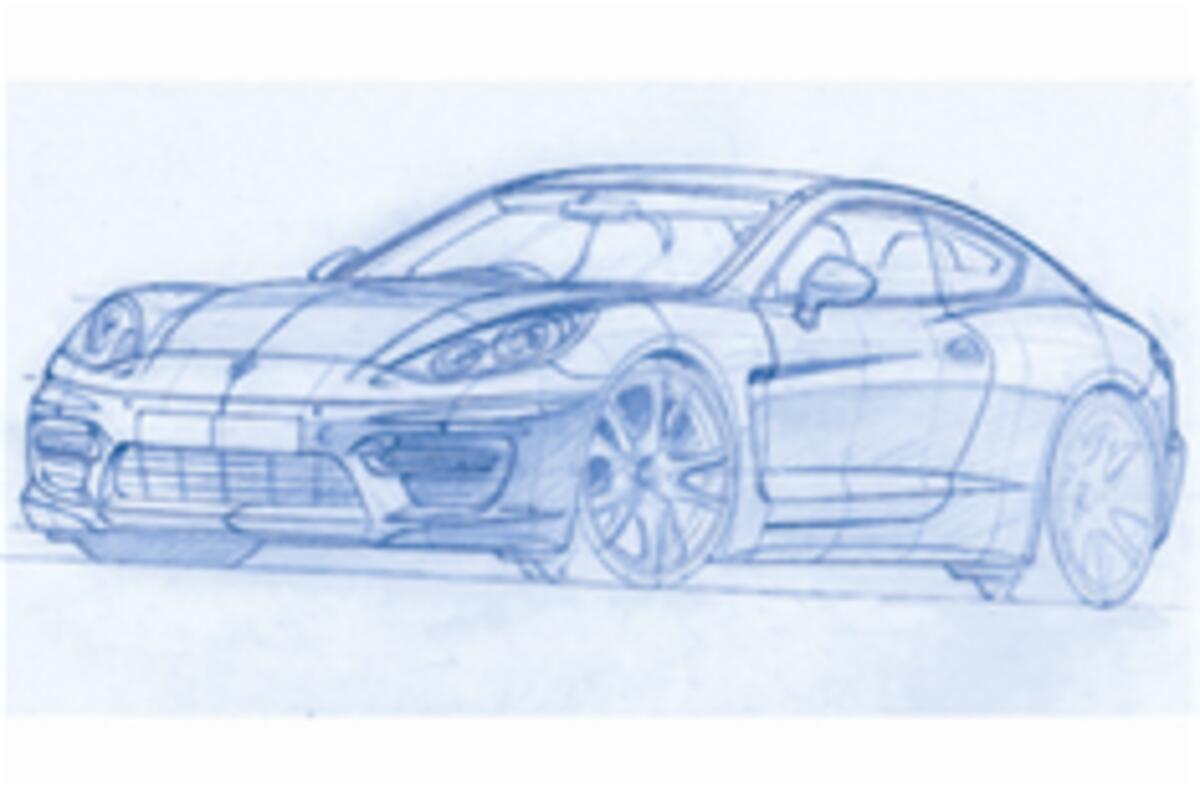Autocar's experts explain how the 928 coupe can be created from the four-door Panamera.
Porsche 928 set to return here
Read about the original Porsche 928 here
Bodyshell
The Panamera structure is built from a very sophisticated mix of materials, taking in four different types of steel, aluminium, magnesium and even stainless steel. Developing a three-door version will start with the relatively simple task of shortening the rear section of the floorpan. However, a completely new body side will have to be designed and tooled, and Porsche will also have to modify the inner structure around the rear strut towers. Aside from a new skin, new alloy doors (with magnesium window frames) will be needed, along with a fresh tailgate.
Engine
The Panamera’s new V8 is based on the Cayenne’s motor, but it has been re-enginered for lower internal friction and much-improved thermal management (both of which improve fuel efficiency). However, by the time the 928 is launched this engine should have gained self-starting (where the engine can restart without a starter motor) which works via the direct injection. We should also expect a downsized V6 based on the V8, possibly with small sequential turbos.
Front axle
The Panamera’s suspension has been designed from scratch and is claimed to achieve great stiffness with lightness. “It presents a quantum leap in unsprung mass behaviour,” one Porsche engineer told us. It also has to deliver the kind of comfort that Porsche is not known for. Changes for the new 928 will be restricted to springs and damper tweaks to cope with different weight distribution.
4x4 system
The Panamera’s compact four-wheel drive system is very clever. It uses a Haldex-style clutch at the rear of the transmission to send power forward to the front wheels. The front driveshaft actually runs through the engine block, clearing the crank by just 1.5mm; this allows the engine to sit very low in the nose. A cert for the 928.
Centre console
New PDK transmissions will make their debut in the Panamera and will be used for the 928. Porsche says that they are 15kg lighter than a regular auto ’box, and much more efficient. The gearboxes have been designed to allow both imperceptible ‘luxury’ shift actions and more brutal ‘sports’ shifts.Much of the Panamera’s interior will also be carried over, in particular the banks of switchgear. Expect a newly designed dash roll top, new air vents, reshaped seats and new door trims. The high centre console stays, though; it’s a function of the huge centre tunnel.
Acoustics
In order to ensure the Panamera is as quiet as possible when running in luxury mode, Porsche engineers spent long sessions in the wind tunnel measuring the surface noise over the car’s body. They did this by placing microphones all over the skin of the final clay model; the goal was to identify the surfaces that were generating the most noise. The same effort will be needed with the new 928, whose new shape will generate a completely different noise signal.
Brakes
As part of the programme to reduce frictional losses, Porsche engineers say that they have reduced pad drag losses by 50 per cent with the new Panamera brake system. It’s claimed that this improves fuel economy by 0.15 litres per 100km (1.9mpg). There are two types of disc on offer: an aluminium/cast iron composite and the top-end ceramic composite brakes.
Rear spoiler
The Panamera features this exceptionally complex rear spoiler, which not only lifts at speed but can also spread its ‘wings’ to ensure the surface of the spoiler is as large as possible, despite the width restrictions of the tailgate design. Engineers won’t know whether a similar unit is needed on the 928 until the car’s full-size clay model has been finalised.
Suspension
The optional air suspension system is particularly sophisticated, with multiple stage dampers (which can operate in three modes) and air springs that hold around two litres of air each and have internal valves to cut off around 50 per cent of the internal air movement when the car is in sport mode. The system offers comfort, sport and sport plus modes; in the latter setting the springs drop by 25mm. Again, a carryover part for the 928, apart from some retuning.
Rear axle
Built around a mighty cast-aluminium subframe (which weighs just 20kg), the Panamera’s new rear suspension can feature conventional springs or air springs, and cope with 500bhp and the Panamera Turbo’s 0-62mph time of just 4.0sec. The Panamera can be specified with two stability systems: Porsche Dynamic Chassis Control or Porsche Stability Management. This complex sub-assembly should be carried over almost unchanged to the new 928.




Add your comment